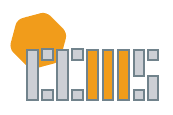Abstract / Synopsis
A cube can be twisted in a playful manner for visual and algebraic insights. The twisting process and the resulting ruled surfaces can be demonstrated using 3D modeling tools (e.g., GeoGebra® and Autodesk Fusion 360®) or elastic cords on a 3D-printable scaffold. The twisted cube is aesthetically appealing, posing interesting questions that are worthwhile at multiple levels. Algebraically, the volume of the twisted cube is shown to be two-thirds of the reference cube. The twisted faces are parts of hyperbolic paraboloids, whose implicit and parametric equations can be established from diverse perspectives in support of further dynamic explorations and discussions about the surface area.
DOI
10.5642/jhummath.202201.27
Recommended Citation
Lingguo Bu, "Twisting the Cube: Art-Inspired Mathematical Explorations," Journal of Humanistic Mathematics, Volume 12 Issue 1 (January 2022), pages 352-365. DOI: 10.5642/jhummath.202201.27. Available at: https://scholarship.claremont.edu/jhm/vol12/iss1/27
